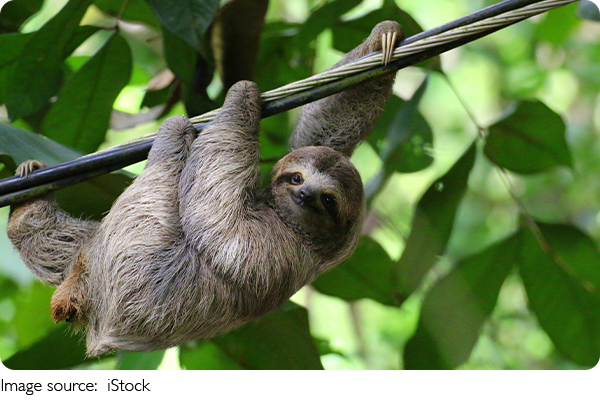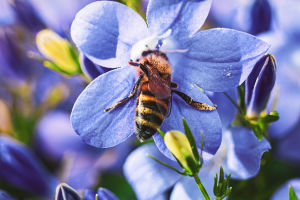How Sloths Master Life

Why do we often admire cheetahs for speed, but overlook the quiet genius of a sloth?
Imagine living high in the rainforest, moving just two meters a minute, and still managing to outwit predators, stay healthy, and even help the forest thrive.
That's exactly what sloths do—and they've been doing it successfully for millions of years.
So how is it possible that being one of the slowest animals on Earth has actually worked in their favor? Let's take a closer look at the science and strategy behind this slow-motion superstar.
1. Energy Efficiency: The Sloth's Secret Superpower
At the heart of a sloth's lifestyle is one simple principle: do less, survive more.
Sloths have one of the slowest metabolic rates of any mammal. In fact, their metabolism is about half that of animals their size. This isn't a flaw—it's a strategy. Because they live on a low-calorie diet of tough, fibrous leaves, they need to conserve energy at all costs. That's why they move slowly, sleep 15–20 hours a day, and even take days to digest their food.
By slowing everything down, sloths avoid the energy rollercoaster most animals face. No hunting, no running—just a steady, minimal-output existence that fits their jungle environment perfectly.
2. Camouflage in Motion (or Lack of It)
Sloths' slowness isn't just about saving energy—it's a survival trick. Many of their predators, like eagles or wild cats, rely on movement to detect prey. But sloths move so slowly they often go unnoticed.
Even more fascinating, their fur grows algae, turning them slightly green and helping them blend into the tree canopy. This algae isn't just for disguise—it also provides nutrients when sloths lick their fur, and even houses tiny ecosystems of moths and microbes that benefit both sides.
So, in a way, sloths wear their own jungle camouflage, complete with built-in snacks and symbiotic roommates.
3. Staying Safe by Staying Still
When you think about avoiding danger, you might imagine running or hiding. Sloths take a different route: don't draw attention in the first place.
By staying high in the trees and hardly moving, they rarely encounter predators. They also descend to the forest floor only once a week—to relieve themselves. And when they do, it's a risky business. But even then, their slow movement and quiet nature often save them from being noticed.
Researchers have found that despite their vulnerability, sloths experience surprisingly low predation rates. Their invisibility strategy works.
4. A Unique Internal Design
Sloths' bodies are uniquely built for this slow lifestyle.
1. They have extra neck vertebrae—up to 9, compared to 7 in most mammals—allowing them to rotate their heads nearly 270 degrees. This helps them scan for danger without moving much.
2. Their grip is permanent, thanks to powerful tendons in their hands and feet that lock around branches. Sloths have been known to remain hanging even after death. This passive grip saves energy and keeps them safe from falling.
3. They are surprisingly good swimmers. In water, sloths can move three times faster than on land and even hold their breath for up to 40 minutes.
It turns out they're not just slow—they're selectively slow, choosing their moments carefully.
5. Ecosystem Heroes in Disguise
Beyond their personal survival, sloths play a valuable role in their ecosystem. The algae in their fur not only helps them blend in but also supports unique microbial life that may have future medical potential.
And because they eat, relieve themselves, and move among specific tree species, they contribute to seed dispersal and nutrient cycling in the rainforest. In other words, sloths help the jungle stay alive and diverse, simply by doing what they do best—living slowly.
Some scientists even argue that without sloths, certain parts of the forest ecosystem might break down over time.

So, What Can We Learn from Sloths?
In a world obsessed with speed, productivity, and constant motion, sloths remind us that slowness doesn't mean weakness. It can mean strategy. Efficiency. Balance.
They've found a way to survive—quietly, gently, and with minimal impact—for tens of millions of years. Maybe that's not something to laugh at, but something to admire.
Next time you find yourself rushing through life, think about the sloth. Could slowing down sometimes help you do better—not just more?
Let us know—what's one thing in your day you could do the "sloth way" to save energy, avoid stress, or just enjoy the moment a little more? We'd love to hear it.
-
 Dolphin TalkUnlocking the Secret Language of Dolphins: How These Marine Mammals Communicate with Each Other!
Dolphin TalkUnlocking the Secret Language of Dolphins: How These Marine Mammals Communicate with Each Other! -
 Bee Dance CodeBee Dance Code: How Bees Share Food Locations Through Dance and Build Social Harmony!
Bee Dance CodeBee Dance Code: How Bees Share Food Locations Through Dance and Build Social Harmony! -
 Walrus Whiskers' SecretDid you know that walrus whiskers are not just for show? They can actually sense underwater shells and other objects!
Walrus Whiskers' SecretDid you know that walrus whiskers are not just for show? They can actually sense underwater shells and other objects!